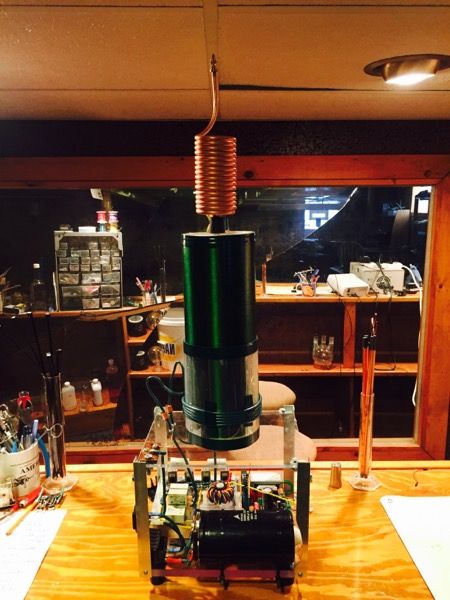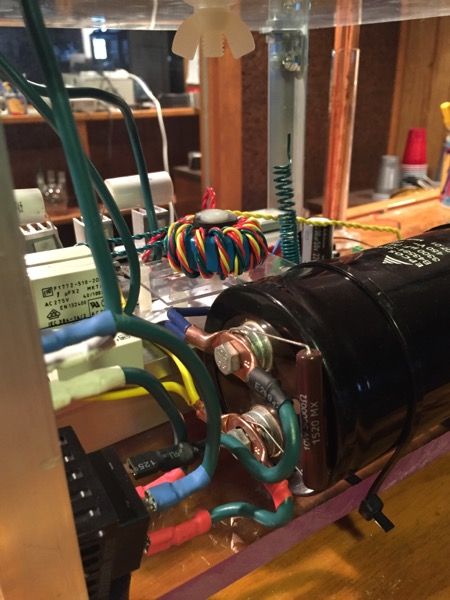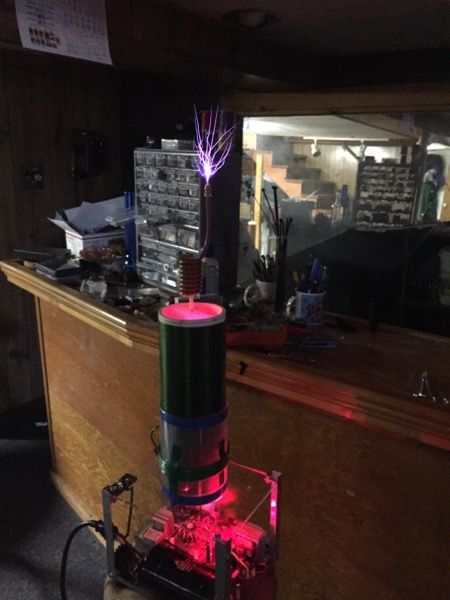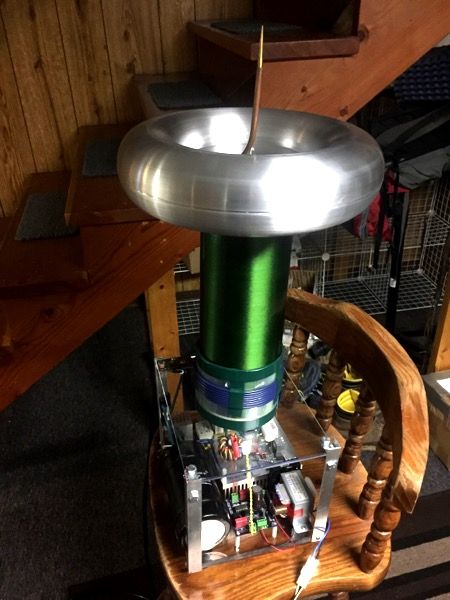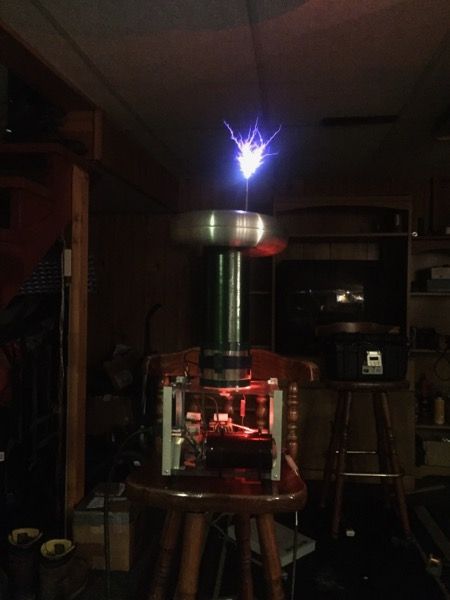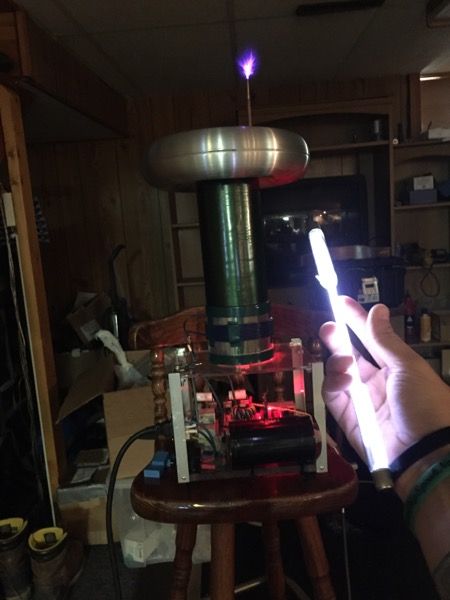VTTC
hello everyone, Typically I build one coil a year. Planning ahead This year for 2017 I want to build a vacuum tube tesla coil. I've been reading a lot and I think I've settled on a design. Nothing revolutionary VTTCs have been around a while. I'd like to build a coil off the Steve wards VTTC5
Mot for the HV source and a single tube design.
Those amazing sword like tendrils appeal to me! As well as the soft glow of triode tubes. Link vvv
designs.
Compact 833A VTTC
Parts I have:
-Fairly large MOT from a 1200W microwave.
-Iirc I have one 1mfd 2300VAC capacitor. (Salvaged from microwave)
-secondary coil already wound. 1640T 30gmagnet wire.
Tube I have in mind 833C(or A). It's an expensive unit for sure but it will give me an option if I want to build bigger.
Where can I source Quality doorknob capacitors?
The second transformer in the circuit is used to heat the grid filiment 10v, <10Amp AC output. Is it common to just use another mot and rewire the secondary for 10v? I haven't read the data sheet for the 833c for its specific needs. Do those secondaries need to have HV wiring or primary 12awg?
I have only JUST started researching. Things I'll be checking into next are the grid resistor and leak circuit.
Right now I won't build a staccato controller though I understand it's benefits.
Is my secondary coil using 30awg magnet wire insufficient for >500W operations? I'd at least like to achieve 16-20in streamers.
Any thoughts, suggestions, parts fs I'd much appreciate.
Thanks guys!








